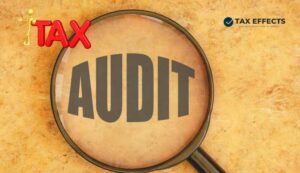When it comes to tax saving, section 80C is the most widely used section. Section 80C has variety of investments which comes with different features. In this article, we will be comparing in details about ELSS, NPS, PPF & ULIP on the basis of their features. These four products as mentioned offer tax savings under Section 80C of the Income Tax. The various features & advantage in these investments are as follows:
(i) Lock-in-period –
How long your investment must be compulsorily stayed in a product is an important feature to consider. On this factor, the ELSS fund is the best option over the rest of the investment instrument with its shortest 3-year lock-in-period.
If you are investing through SIP (systematic investment plan) in ELSS, you should know that each SIP installment will need to complete the 3-year lock-in-period before you can redeem the investment. Effectively, each SIP installment will have a different maturity date.
Whereas in case of PPF (15 years lock-in-period), NPS (lock-in-period is upto when the individual attains 60 years of age) & ULIP (Minimum lock-in-period of 5 years) which is much more when compared to ELSS fund.
(ii) Returns –
It is well known fact that equity as an asset class over the long term not only beats inflation, but it also tends to build wealth. If one analyses ELSS funds with an over 10-year history, the average returns for the ELSS category are in the 12-15% CAGR. This period includes market ups & downs. But such returns alone should not be the reason for you to invest. Generally, ELSS, NPS or ULIP which are mostly market-linked. The potential to earn more than what the PPF offers in the long run, over 8-10 years period, is a preferred time frame to stay invested in them.
(iii) Liquidity –
liquidity factor in all of these investments is very stringent. If you are investing in these 4 instruments, you have to make sure that you have enough emergency fund in your account in case of any emergency such as health issues arises. However, ELSS fund is having the shortest lock-in-period of 3 years among all these investment instrument, you can have access to your investment in 3 years from date of investment.
(iv) Tax treatment –
PPF – PPF fall under EEE category i.e., the investment amount qualifies for Section 80C deduction, Interest earned & maturity amount are all tax free.
ELSS – ELSS investment amount qualifies for 80C deduction & the gain amount will be taxed as Long-term capital gains (LTCG). LTCG up to Rs 1 lakh a year is exempt from income tax under section 112A. Amount over & above Rs 1 lakh is taxable @ 10% without indexation benefit + 4% Cess.
ULIP – Budget 2021 has proposed to allow tax exemption for maturity proceeds of ULIP having annual premium up to Rs 2.5 lakh. However, “the amount received on death shall continue to remain exempt without any limit on the annual premium. The cap of Rs 2.5 lakh on the annual premium of ULIP shall be applicable only for the policies taken on or after 01.02.2021.
NPS – Principal amount qualifies for deduction u/s 80C & an additional deduction of Rs 50,000 u/s 80CCD(1B) is also allowed. NPS is a long-term disciplined savings, on maturity you can withdraw up to 60% of your accumulated amount from your NPS account which is exempt from tax. The balance 40% in your NPS must be invested in purchasing annuity plans & you will get pension which will be taxable as per your slab rates. However, if your accumulated fund in NPS is upto Rs 5 lakhs at time of maturity, then you can withdraw the whole amount.
Risk factor –
Investments of any kind has risk associated with it. The PPF returns are guaranteed, the returns vary every year and sometimes even every quarter as per government fixed interest rate in case of PPF. Whereas in case of NPS, ULIP and ELSS as each one of them is market-linked, returns vary. However, when investing in market-linked instruments such as NPS, ULIP and ELSS, one must consider the long-term potential returns and choose accordingly.
Wealth Creation –
Investing works best when it is directed towards financial goals. You could set financial goals other than tax savings when investing into the PPF, ELSS, NPS or ULIP. From these four investment strategies, a suitable retirement plan is the NPS, given its long-term lock till retirement. Between ELSS and ULIP, depending on the choice on makes there is a possibility to set future financial goals such as a child’s education, buying a house. The PPF, with its almost predictable returns, is suited for the risk-averse investors.
Investment to be considered among all the 4 instruments –
Among the 4 instruments, the ELSS and NPS stand out compared to PPF and ULIP.
a) PPF is a fixed guaranteed return investment for low risk-taking investors. It falls under EEE category. PPF has a long lock-in period of 15 years, it allows partial withdrawals once in a year starting from the 7th year of subscription, whereas premature closure is permitted after 5 years for treating life-threatening diseases of the account holder, spouse, dependent children or parents.
b) ULIP allow the investors to experience equity investing with tax-free switches between different fund types to benefit from, but combining life insurance and investments compromises insurance cover and investment returns.
c) ELSS, with its shortest lock-in and higher equity exposure, is an ideal choice when investing for a long-term goal such as a child’s education, buying a house or planning for a foreign trip.
d) NPS being a dedicated old-age savings and pension plan. The long-term suitability with regular savings towards a pension is a feature that makes NPS a must opt tax saving instrument. NPS is a long-term disciplined savings to effectively plan your retirement through the safe and regulated market-based return. The additional tax savings under section 80CCD (1B) up to Rs 50,000 in a year is an added advantage in addition to Rs 1.5 lakhs limit deduction under Section 80C.
e) The good thing about the NPS is that it has equity allocation. However, the equity allocation is still not as much as ELSS fund. ELSS invest primarily in equities and can generate higher returns than the NPS. Also, if you are an aggressive risk-taking investor, equity exposure by NPS won’t be sufficient in the long run. Since ELSS can meet that requirement, it serves investors with more risk-appetite better returns in the long period of time & can accumulate corpus better than NPS.
Happy Readings!
Disclaimer: The information contained in this website is provided for informational purposes only, and should not be construed as legal/official advice on any matter. All the instructions, references, content, or documents are for educational purposes only and do not constitute legal advice. We do not accept any liabilities whatsoever for any losses caused directly or indirectly by the use/reliance of any information contained in this article or for any conclusion of the information.









